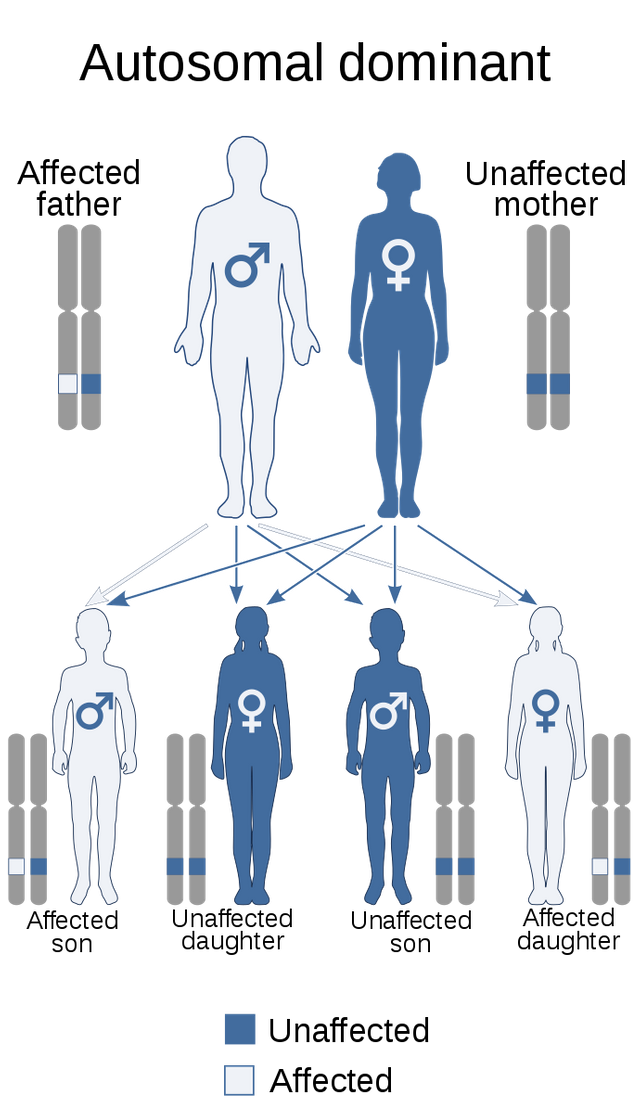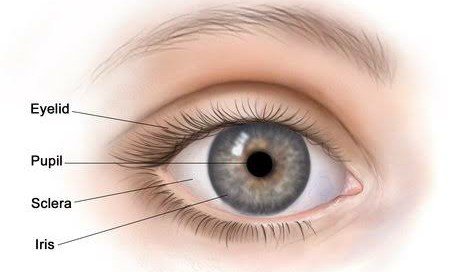GENETIC DISORDER THAT TRANSFORMS AN INDIVIDUAL INTO A DISNEY PRINCESS
.jpeg) (License: Public Domain]:
Flickr
(License: Public Domain]:
Flickr Back then as a youngster, growing up was and is still so much fun for a lot of people mainly because of certain TV productions. The truth is that kids are always star-struck by cartoons and animations, that's why Disney and Nickelodeon are considered most times as their favorite TV channels. Actually, most of my male friends saw Disney magical animations as being girly, and they preferred cartoons or action animations. But since I was surrounded with female siblings, I kind of had no choice but to get used to watching Cinderella, Rapunzel, Sofia the First, Snow White, Elena of Avalor, Ariel; the list is endless. Unlike cartoons and action animations, these magical animations were and are always filled with amazing lessons.
Well, when comparing these Disney princesses; one outstanding and similar feature is noticeable. For those that have watched these animations, you'll agree with me that they always have big enchanting eyes. In actuality, on several occasions I've heard kids wishing they could at least be as charming as these princesses. Funny enough, what most people don't know is that having similar glamorous feature is really possible. However, an individual can't get it by mere wishing; rather, he or she must be born with it. The reason is because it's mainly an outcome of disruption in genes. At this point it's pertinent to stress the fact that this condition is a genetic disorder basically known as Axenfeld-Rieger syndrome. So on that note, the main aim of this article is to elucidate more on this rare genetic disorder as well as pinpoint approaches that could possibly be of help to affected individuals.
Understanding the basis of Axenfeld-Rieger syndrome
 (License: Public Domain]:
Wikipedia Commons
(License: Public Domain]:
Wikipedia Commons The concept of Axenfeld-Rieger syndrome is still posing problems to experts and researchers due to the fact that its occurrence may be sporadic in nature. That notwithstanding, several research on this rare disorder have ascertain the inherent involvement of genetic mutations. For the sake of clarity, I'll try bringing it down to a layman's level. From the knowledge of elementary biology, we are aware of the fact that:
a gene is a functional unit of inheritance that controls the transmission and expression of traits.
Now, mutation of these genes otherwise means that their sequence automatically differ from what can be found in normal people. Therefore, we can define "genetic mutation as a permanent alteration of nucleic acid, resulting in DNA sequence distortion". To have a clearer understanding of this subject matter, I'd advise you to check on the following articles; What is a gene mutation and how do mutations occur? by National Institutes of Health (NIH), and gene mutation by Dr. Laurence Loewe.
Furthermore, despite the fact that Axenfeld-Rieger syndrome specifically revolves around genetic mutation, it doesn't end there. From a research symposium, it has been confirmed that this disorder is inheritable as an autosomal dominant trait. In one word we can say that the defective gene is located on an autosome and there's a 50/50 chance of offspring inheriting the condition from an affected parent since only one copy of the deleterious allele is needed to manifest the disease. With that in mind, it might interest you to know that the human chromosomes are basically of two types known as autosomes and allosomes. A combination of both of them will give a total number of 46 chromosomes. Each of these chromosomes have different functions, however our major emphasis will be on the autosomes. Since chromosomes are always arranged in pairs, the autosomes are labeled from 1 - 22 pairs in humans. Like I said earlier, the function of autosomes and allosomes are entirely different from each other. For the allosomes, there are known as sex chromosomes (X and Y), however, the autosomes are not sex chromosomes but their genes somehow play vital role in sexual determination.
From the above explanation, it is worthy of note that out of the 22 pairs of autosome gene-carrying chromosomes, 3 of them are usually defective in cases of Axenfeld-Rieger syndrome. The defective chromosomes are 4, 6 and 13. To be specific, the respective genes that are affected on these chromosomes are PITX2, FOXC1 and PAX6. On that note, it's pertinent to state that the 3 defective autosome gene-carrying chromosomes are the determinants of the 3 types of Axenfeld-Rieger syndrome known to man. Well, In spite of the fact that there are 3 types of Axenfeld Syndrome, all of them display similar symptoms and abnormalities which are primarily linked with the malfunctioning of the eyes. At the same time, Axenfeld-Rieger syndrome is not just an eye disorder, other symptoms and abnormalities include malformations of the face, teeth, and skeletal system. But for the purpose of this article, we'll only concentrate with the eyes.
Effects of Axenfeld-Rieger syndrome on the eyes
 (License: Public Domain]:
Wikipedia Commons
(License: Public Domain]:
Wikipedia Commons When we talk about the resultant effects of Axenfeld-Rieger syndrome, the area of the eyes that's mostly affected is the anterior segment which comprises of the iris, pupil, and the cornea. Since this disorder is congenital, children born with it often have very small and sometimes no iris at all. Also, the pupil that's always at the center of the iris may be off-center (corectopia), more than one (polycoria) or completely cover the iris. Likewise, the mere fact that light enters the eye through the pupil is a prerequisite for excessive light sensitivity in victims of this disorder. This is the main reason why majority of these victims develop glaucoma at an early stage in life.
Aside from other abnormalities associated with Axenfeld-Rieger syndrome, a situation where the pupil completely covers the iris sometimes seems like a beautifying defect. Yeah, you heard me right. Why am I saying this?. Two days ago while surfing the internet I stumbled on a story about a little girl with big beautiful eyes that are all pupil. Curiosity made me click on the link and luckily for me that's how I got to learn about Axenfeld-Rieger syndrome. For the little girl (Mehlani Dickerson), her case supports the assertion that the disorder is sporadic in nature. According to her parents, they've never seen or heard about anyone in their genealogy that suffered from the disorder. Mehlani's mum narrated that the amazing aspect of this defect is that each time she steps with the daughter, she's often stopped by strangers in awe of her enchanting pupil eyes. Funny enough, what most of them don't know is that her beauty is also her blight. You can read the full story HERE
Just like Mehlani, research studies have shown that a greater percentage of individuals with this defect most times suffer from decline in vision that may lead to potential blindness. The reason is because the drainage canals in the eyes are improperly formed in victims of Axenfeld-Rieger syndrome. For this reason, fluids that should have been removed are accumulated resulting in a disease condition called glaucoma. Peradventure, if nothing is done to remedy the situation, the optic nerves may as well be damaged beyond repair.
...a normal life is still possible
 (License: Public Domain]:
Pixabay
(License: Public Domain]:
Pixabay Due to the fact that Axenfeld-Rieger syndrome is congenital, the only tangible way the world could possibly get rid of it is through a prenatal procedure such as amniocentesis. To understand the concept of this procedure, you can check on my article Genetic counseling and amniocentesis: Salvation of the unborn. At the same time, for individuals that are already born with this disorder, there's still hope for survival. With medications and surgeries, Axenfeld-Rieger syndrome is entirely manageable.
Also, the society has a role to play. Bullying is one of the major problem victims of this disorder (especially those suffering from abnormalities associated with the teeth and other parts of the body) get to experience on a daily basis. Psychologically, this will only complicate things and may result in depression and suicidal thoughts. As a matter of fact, if humans could at least show more love, then the world would definitely be a place worth living for individuals suffering from different genetic abnormalities.
I hope you've learned something from this article. Thanks for doing this with me. Till next time!
To read more about this topic, check out these REFERENCES
American Academy of Ophthalmology Article on Axenfeld-Rieger Syndrome. Retrieved on 20th December, 2018
National Institute of Health Articles on Axenfeld-Rieger syndrom. Retrieved on 20th December, 2018
Axenfeld-Rieger syndrome from wikipedia.org
Images are from flickr, pixabay and wikipedia commons all licensed under creative commons and eligible for commercial use.
This post has been voted on by the SteemSTEM curation team and voting trail in collaboration with @curie.
If you appreciate the work we are doing then consider voting both projects for witness by selecting stem.witness and curie!
For additional information please join us on the SteemSTEM discord and to get to know the rest of the community!
Merry Christmas, enjoy the vote!
Thank you. Merry Christmas to you too.
I did learn something indeed!
Very well structured post, and I liked the Disney princess angle and the personal anecdote with which you began.
You making me blush. 😉
Thanks for reading. Merry Christmas